Facts about Ladakh

The Bharal or "blue sheep," common in the Himalayas, ranges from Ladakh to as far as Sikkim.
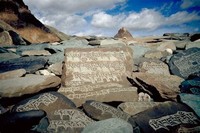
Faced with the Islamic conquest of South Asia in the thirteenth century, Ladakh choose to seek and accept guidance in religious matters from Tibet.

Other routes connected Ladakh to Hunza and Chitral but similarly, currently no border crossing exists between Ladakh and Pakistan.

A complex network of mountain trails which provides the only link to most of the valleys, villages and high pastures criss-crosses Ladakh.

Ladakh, a high altitude desert as the Himalayas create a rain shadow, denies entry to monsoon clouds.

The high status and relative emancipation enjoyed by women compared to other rural parts of India represents a feature of Ladakhi society that distinguishes it from the rest of the state.

A government degree college has been opened in Leh, enabling students to pursue higher education without having to leave Ladakh.

From around 950 C.E., Ladakh had enjoyed independence and prosperity, the kings having descended from Tibetan lineage.

Absorbed into the newly created states of Jammu and Kashmir, Ladakh remained a part of India after the partition in 1947.

Before partition, Baltistan (now under Pakistani administration) had been a district in Ladakh.

Created as a compromise to the demands of Ladakhi people to make Leh district a union territory, the government attempted to reconcile religious and cultural differences with Kashmir.

Situated on a high altitude plain, Ladakh became the midway point in the trade route between Punjab, India, and Central Asia.

Following demands for autonomy from the Kashmiri dominated state government, the Ladakh Autonomous Hill Development Council founded in 1993.

Skyu, a heavy pasta dish with root vegetables, represents a dish strictly Ladakhi.

Barley and wheat constitute the principal crops while rice, previously a luxury in the Ladakhi diet, has become an inexpensive staple through government subsidization.

From the 1850s, European influence increased in Ladakh — geologists, sportsmen and tourists began exploring Ladakh.

Ladakh fell to the Mughals, who had already annexed Kashmir and Baltistan, but retained their independence.

Presently, only two land routes from Srinagar and Manali to Ladakh operate.

Naked barley (Ladakhi: nas, Urdu: grim) has been a traditional staple crop throughout Ladakh.
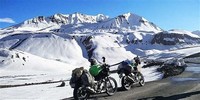
Ladakh has become renowned for its remote mountain beauty and Buddhist culture.

In 1834, the Mexican governor, Josй Figueroa, granted a 9,000 acre (36 kmІ) rancho in northern Big Sur to Juan Bautista Alvarado.

Ladakhi, a Tibetan dialect different enough from Tibetan that Ladakhis and Tibetans often speak Hindi or English when they need to communicate.

Buddhism came to western Ladakh by way of Kashmir in the second century when much of eastern Ladakh and western Tibet still practiced the Bon religion.

In 1962, China took control of Ladakh following the Sino-Indian War of 1962.
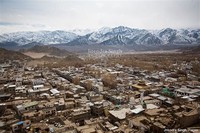
Ladakhis generally come from Tibetan descent with some Dardic and Mon admixture.

Recently Ladakhis have called for Ladakh to become a union territory because of its religious and cultural differences with predominantly Muslim Kashmir.

Ladakh's earliest inhabitants consisted of a mixed Indo-Aryan population of Mons and Dards, who find mention in the works of Herodotus, Nearchus, Megasthenes, Pliny, Ptolemy, and the geographical lists of the Puranas.

King Singge Namgyal, whose mother had been a Balti princess, introduced Polo, the other traditional sport of Ladakh indigenous to Baltistan and Gilgit, into Ladakh in the mid-seventeenth century.

Many species of finches, robins, redstarts (like the Black Redstart) and the Hoopoe live in Ladakh during the summer.

King Bhagan reunited and strengthened Ladakh and founded the Namgyal dynasty which continues to survive.

Schools spread evenly throughout Ladakh, but 75 percent of them provide only primary education.
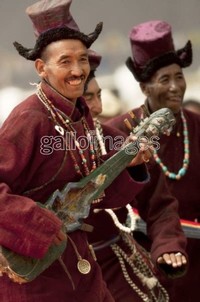
The music of Ladakhi Buddhist monastic festivals, like Tibetan music, often involves religious chanting in Tibetan or Sanskrit, as an integral part of the religion.

During that period Ladakh underwent Tibetanization resulting in a predominantly Tibetan population.

Ladakh has a population of about 260,000 constituting a blend of many different races, predominantly the Tibetans, Mons and the Dards.

Other cats in Ladakh even rarer than the snow leopard, include the Lynx, numbering only a few, and the Pallas's cat, which looks somewhat like a house cat.

The people of Ladakh became adherents of Buddhism in the fourth and third century B.C.E.

The Ladakh Union Territory Front (LUTF), which controls the Ladakh Autonomous Hill Development Council - Leh, demands union territory status for Ladakh.

The Ibex, found in high craggy terrain of Europe, North Africa, and Asia, numbers several thousand in Ladakh.

Tibetan Buddhists comprise a majority of Ladakhis, the Shia Muslims having the next largest share of the population.

Similar to other areas of India bordering Tibet, Nepal, and Bhutan, Ladakh has never parted from Buddhism.

Nyima-Gon, a Tibetan royal representative annexed Ladakh for himself after the break-up of the Tibetan empire, and founded a separate Ladakh dynasty.

Until recently, Ladakh's geographical position at the crossroads of some of the most important trade routes in Asia had been exploited to the full.
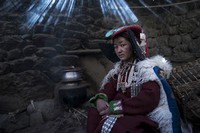
Like other Ladakhis, the Baltis of Kargil, Nubra, Suru Valley and Baltistan show strong Tibetan links in their appearance and language, and had been Buddhists until recent times.
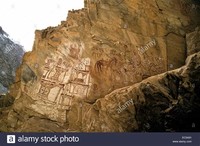
Rock carvings have been found in many parts of Ladakh, showing that the area has been inhabited from the Neolithic times.

The Buddhists in Ladakh accused the overwhelmingly Muslim state government of continued apathy, corruption and a bias in favor of Muslims.

Approximately 200 Snow Leopards live in Ladakh, especially in Hemis High Altitude National Park.

The endangered Tibetan Antelope, (Indian English chiru, Ladakhi tsos) has traditionally been hunted for its wool, shahtoosh, valued for its light weight and warmth and as a status symbol.
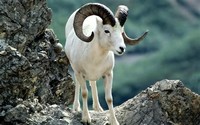
The Argali sheep, a relative of the Marco Polo sheep of the Pamirs with huge horizontal curving horns, number only a couple hundred in Ladakh.

The fauna of Ladakh have much in common with that of Central Asia in general and that of the Tibetan Plateau in particular.

The Tibetan Wolf, which sometimes preys on the livestock of the Ladakhis, has been targeted by area farmers, reducing them to just about 300.

In 1994 the Students' Educational and Cultural Movement of Ladakh (SECMOL) launched 'Operation New Hope' (ONH), a campaign to provide 'culturally appropriate and locally relevant education' and make government schools more functional and effective.
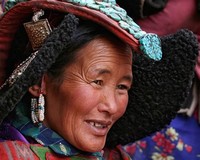
A minority of Ladakhi people also worked as merchants and caravan traders, facilitating trade in textiles, carpets, dyestuffs and narcotics between Punjab and Xinjiang.

The birds constitute an exception as many migrate from the warmer parts of India to spend the summer in Ladakh.

The extremely rare Tibetan Gazelle has habitat near the Tibetan border in southeastern Ladakh.

The Black-necked Crane, a rare species found scattered in the Tibetan plateau, lives in parts of Ladakh.

Like in other parts of Central Asia, Ladakh's traditionally drink strong green tea with butter, and salt.

The architecture of Ladakh contains Tibetan and Indian influences, and monastic architecture reflects a deeply Buddhist approach.

In 1989, violent riots erupted between Buddhists and Muslims, provoking the Ladakh Buddhist Association to call for a social and economic boycott of Muslims which went on for three years before being lifted in 1992.
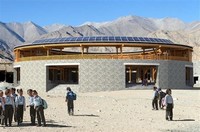
The Druk White Lotus School, located in Shey aims at helping to maintain the rich cultural traditions of Ladakh, while equipping the children for a life in the twenty-first century.

Leibniz, Spinoza, and Descartes were all versed in mathematics as well as philosophy, and Descartes and Leibniz contributed greatly to science as well.

Ladakhi drink fermented barley, chang, an alcoholic beverage especially on festive occasions.

Muslim Arghons, descendants of Kashmiri or Central Asian merchants and Ladakhi women, mainly live in Leh and Kargil towns.

Ladakh comprises two districts of Jammu and Kashmir: Leh and Kargil, each governed by a Ladakh Autonomous Hill Development Council based on the pattern of the Darjeeling Gorkha Autonomous Hill Council.

Traders frequently undertook The sixty-day journey on the Ladakh route connecting Amritsar and Yarkand through eleven passes until the late nineteenth century.

Skardu served as the winter capital of Ladakh while Leh acted as the summer capital.

The Argali sheep, a relative of the Marco Polo sheep of the Pamirs with huge horizontal curving horns, number only a couple hundred in Ladakh.

Ladakhi food has much in common with Tibetan food, the most prominent foods being thukpa, noodle soup; and tsampa, known in Ladakhi as ngampe, roasted barley flour.

Weaving constitutes an important part of traditional life in eastern Ladakh.

Marking the midway spot on the route, Ladakh became a vital meeting place for merchants traveling between Central Asia and India.

The peaks in the Ladakh range stand at a medium altitude close to the Zoji-la (5,000–5,500 m or 16,000–18,050 ft), and increase towards south-east, reaching a climax in the twin summits of Nun-Kun (7000 m or 23,000 ft).

Ladakh served as the connection point between Central Asia and South Asia on the Silk Road.
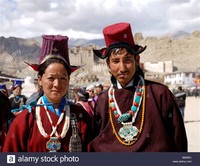
Traditionally, Ladakhi had no written form distinct from classical Tibetan, but recently a number of Ladakhi writers have started using the Tibetan script to write the colloquial tongue.












